Inuit WindSled
The 1st wind powered vehicle in the world to
cross Antarctica and the Arctic.
The WindSled is designed to be a premier mobile base for both national and international polar research efforts, including those conducted by universities across the globe. It offers an eco-friendly solution for scientists and researchers to carry out their projects in the untouched territories of the polar regions. The WindSled efficiently addresses and overcomes the common challenges of accessibility, difficult terrain, and the high costs associated with polar expeditions, boasting a solid history of success.
Our initiative relies on a safe, effective, adaptable, and cost-efficient platform to support scientific and technological missions in the Antarctic and Arctic. To achieve this, a variety of vehicles, operated by expertly trained kite handlers, will be prepared. These vehicles will be made available to research teams during their expeditions, particularly in Antarctica.
The Inuit WindSled Project represents a significant advancement in polar research capabilities. As a flexible and mobile platform, it offers unprecedented opportunities for scientific discovery in the Antarctic and Arctic regions, areas where critical data and information are still vastly needed.

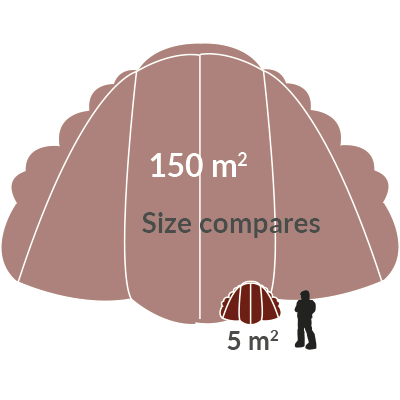
Locomotive Module
It is the traction part of the sled. The kite is attached to it. Three members of the team are responsible for flying/running the kite in shifts of 10 hours.

Local Distribution
The windsled can be totally divided. It can be fit in a 4x2x2 meters container with a total 2.045 kg (550 crew, 500 sled, 240 food).
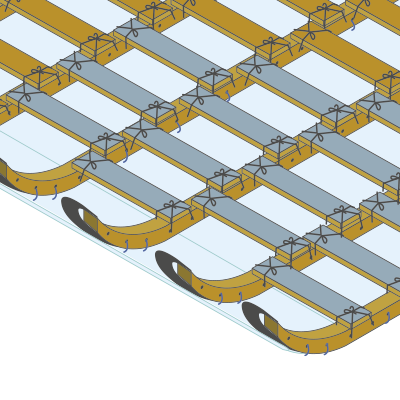
Larramendi Sled
The rails are sewn by the cross bars. Thus, the sled get a flexibility and exceptional resistance which allows it to adapt to the ice irregularities.

The Kite
Kite model NPW5. Is together with the wind, the windsled propellant. They are equipped with twelve kites. The biggest one has an area of 150 square meters (it is used for slow winds). The smallest has a measure of 5 square meters (it is used for strong winds).
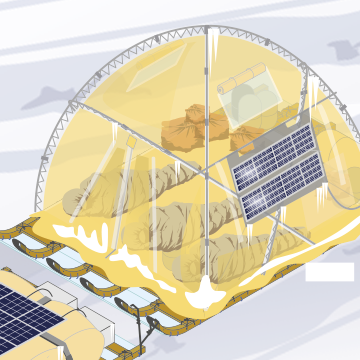
Living Space Module
This is the unit where the team that is not driving can have a rest. This can accommodate all the team members. The six crew members are four hours together per day, to have lunch, have arrest and take air and ice samples for study.
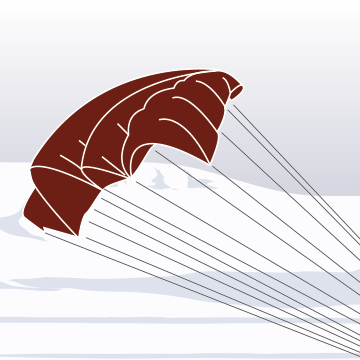
The Wind Propeller
The average speed is 8 to 15 km/j. The maximum wind speed with which you can navigate is 50 km/h. The length of the lines are around, 150, 300 and 500 meters, depending on the strength and direction of the high wind. All the kites have Kevlar reinforcement.

Why not use the wind to navigate through the oceans of ice of Greenland and Antartica? Simplicity to reach zero emissions in the North and South Pole.
Philosophy

The International Inuit WindSled Project embodies the commitment to deeply understand Earth's most enigmatic regions while preserving their pristine condition. This initiative aims to explore our planet's history and potential future impacts in a manner that minimally disrupts natural habitats, from straightforward approaches to realizing ambitious objectives.
Rooted in the millennia-old knowledge of the Inuit peoples and their seamless integration with the Arctic's frosty environment, the WindSled combines age-old wisdom with modern technology. It leverages kites to capture wind energy, embodying a purely eco-friendly means of conducting polar research.
This innovative vehicle enables cost-effective scientific exploration across the globe's Polar regions, gathering essential data on snow and ice composition, precipitation patterns, weather conditions, and atmospheric pollution. By serving as a nomadic laboratory, the WindSled advances scientific endeavors in Antarctica and the Arctic without the need for significant financial outlays on infrastructure or logistical support. This project has successfully navigated over 12,430 miles (20,000 kilometers) through both poles, drawing acclaim and interest from leading scientific communities worldwide for its contributions to polar research.
History and Evolution
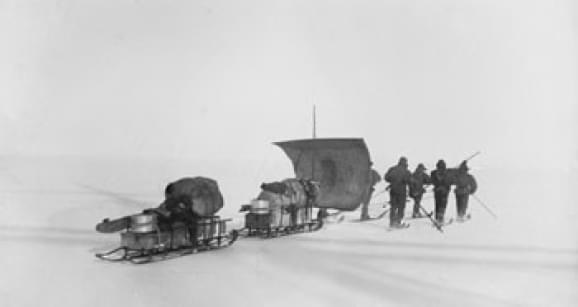
The first attempt to exploit the wind to carry weight was by the Norwegian Fridtjof Wedel - Jarlsberg Nansen, who in 1888 led the first crossing of the Greenland interior, at the time, the first major known incursion on the ice. Between 1893 and 1896, Nansen tried to reach the North Pole, and even if he couldn't attain it, this journey served to lay the foundations of what the polar exploration during the twentieth century would be like.
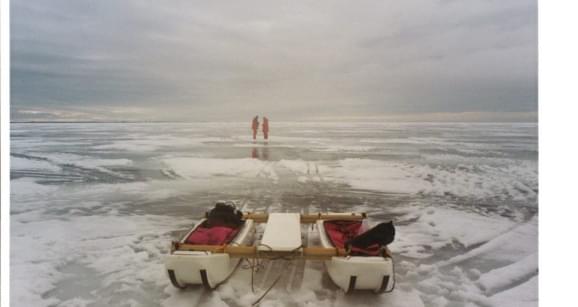
2000
A first prototype in January-February in the year 2000 utilized an Inuit wooden sled, with a kite and was tested in the Pyrenees. Here, Ramon Larramendi and Javier de la Puente, the builder and founder of “Fun Run Kayak”, realized that it had little stability. Joining two sleds was necessary to prevent overturning. A few months later, a second prototype was designed at Javier de la Puente's workshop in Aranda de Duero (Spain). It was made out of fiberglass, 3 meters (9 ft) long by 1.5 meters (4 ft) wide and similar to the ocean catamarans.
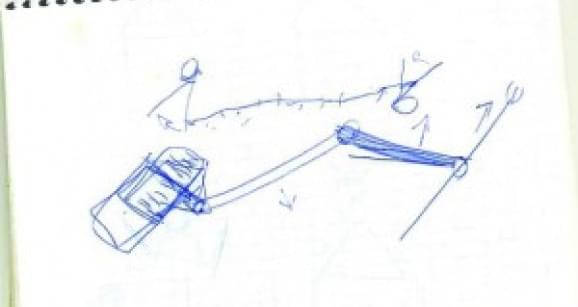
After a few testings in Canada a new WindSled begins to take shape, a third prototype based on Inuit design, much simpler in structure but able to be driven by the wind and repaired when needed. The expedition members, thus, substantiate that it may be driven by kites.
They made their first sketches and drawings of what the future sled would be like. In a school notebook they drew, shaped and brainstormed ideas that would originate what is now the only eco-polar vehicle in the world.
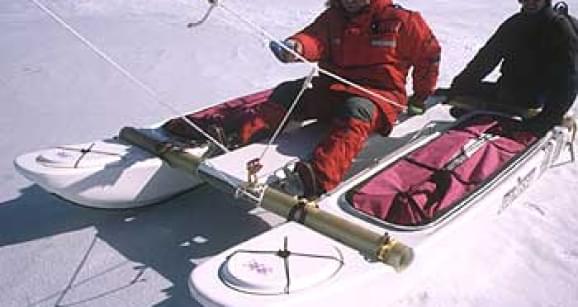
The fourth prototype is tested on the first voyage to Greenland in the year 2000; measuring 4 meters (13 ft) long by 2.5 meters (8 ft) wide and weighing 450 kilos (992 lbs). Insisting on the first idea, it is formed by two separate fibre glass sleds, each with its own kite, and quite easy to store every season. The expedition verifies that the more simple “nasa type” kites break less than the “drawer type” ones and that it's much better to use one large sled instead of two given the difficulty for both to progress at the same speed.
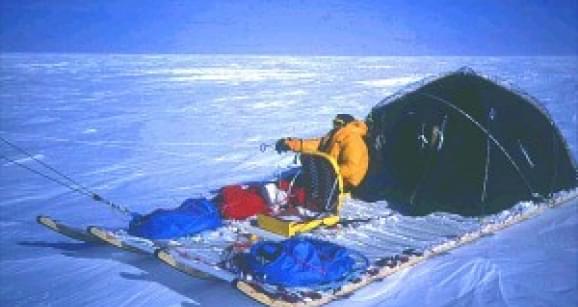
2003
In the year 2003 the sixth prototype of WindSled is tested in Greenland, a detachable model that can be divided in two parts. Thus, using four rails, the wind vehicle is converted into two sledges 'pulkas' that can be carried by the expeditionary in case of no wind. It is nicknamed 'the catapulka'. It uses seven kites reinforced with Kevlar, designed and manufactured at Juan Lupión's workshop. For the first time in this type of expedition it uses a 48 square meter (516.66 sq ft) kite as compared to the 28 square meters (301.38 sq ft) above (Mr. Lupión's achievement). In this manner, better use of the wind is accomplished and capability of transporting 500 kilos (1102 lbs) of weight is attained.

2005
The seventh prototype is the first to be taken to Antarctica. Now it is made out of one piece. Its measurements are 5.40 meters (17 ft) long by 2.80 meters (9 ft) wide. Among the improvements we find the tent's habitability module for expeditionary and the size of the kites designed by Juan Lupión; leaded for the first time by a 60 square meter (645.83 sq ft) one. On this crossing, the wind sled suffers numerous breaks of its 97 rungs made out of wood instead of carbon fibre. The Antarctic test shows that vehicle weight should be reduced by about 800 kilos (1763 lbs). The sastruguis are too high to attain velocity and the snow is much harder than in Greenland. But even being in poor condition and during the worst part of the expedition trip, the wind sled obtained a good speed pulled by kites. For a few days it worked with two modules, one hooked up after another, first attempt of a convoy with more than one sled.
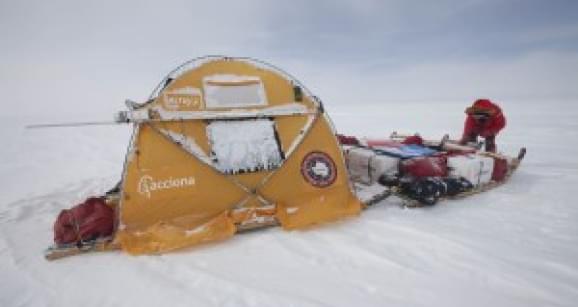
One of the priorities of the new model was to reduce the weight of the vehicle itself, to be able to carry more scientific material, which is the ultimate objective. Experts in design and construction tested stronger, more flexible and lighter materials. The new WindSled consisted of three modules: The first was the locomotive one in which there is a transparent tent to protect pilot expeditionary from the wind and cold while allowing part of the team to work inside while other members rest in the third module. The second module is the loading one: food, scientific instrumentation, sample collection and solar panels. The third module is the habitability (or living) one, with a specially designed tent to withstand strong gusts of wind.
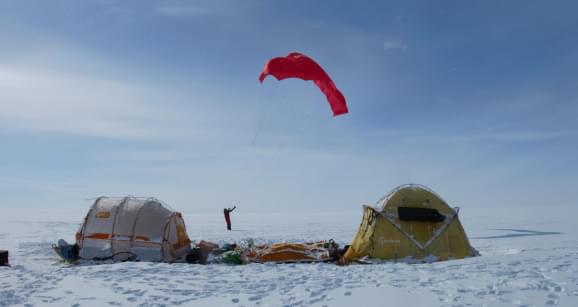
2018-19
The tenth prototype was designed for the Ice Summit Expedition Greenland, in 2016. The convoy concept is tested with four modules which can carry greater loads expanding its possibilities of becoming a real scientific vehicle. With this configuration, the WindSled may be divided in two parts.
Inuit WindSled: a Scientific Project
The WindSled is not just a vehicle. It is a global project that wants to 'do science'. It is
the most economical, sustainable and simple manner to research the Arctic and the
Antarctic.
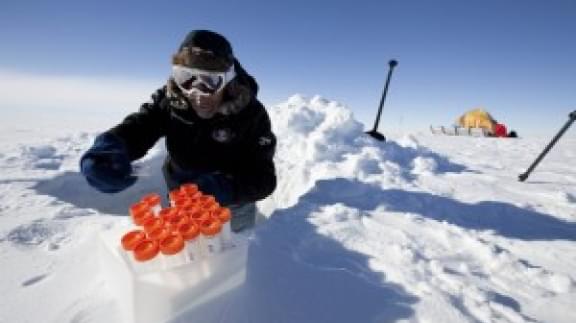
Mobile Laboratory and WindSled Science
The WindSled offers scientists the possibility of bearing an active laboratory on ice while traveling at 20 km (12.42 mi) / hour on average. Thanks to the energy facilitated by photovoltaic panels, the laboratory can be kept active with scientific instrumentation and computers functioning on the go.
Being a zero emissions vehicle, the WindSled allows scientists to collect samples not contaminating with the means of transportation. Samples may be accumulated in the storage module as well, up to a total of four tons in advanced designs of the vehicle.
In the two former Antarctica expeditions performed, diverse research projects have been included. The results are now pending publication.